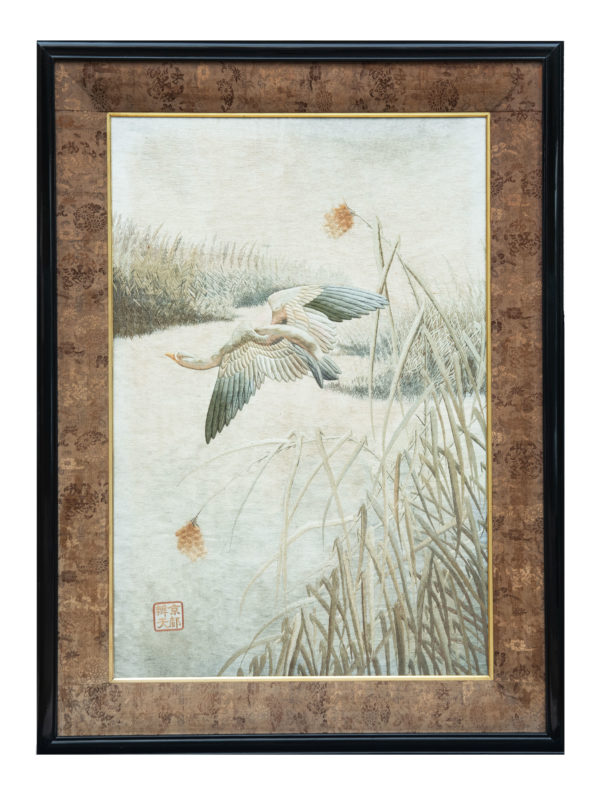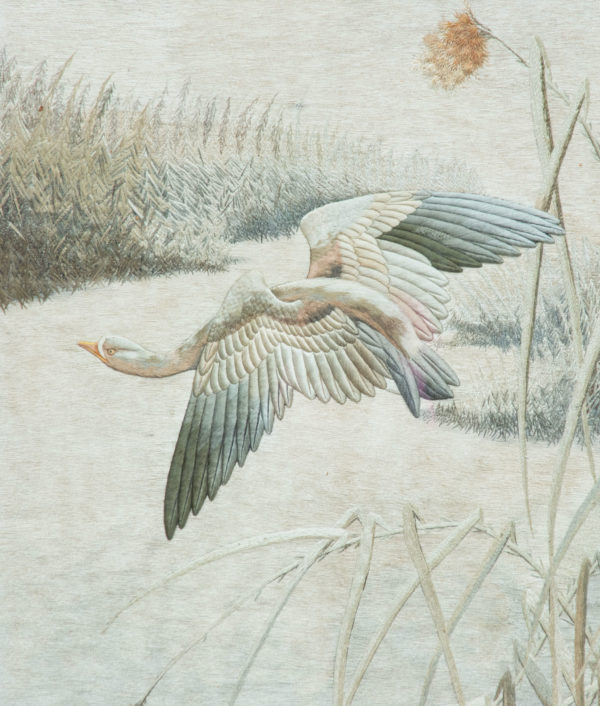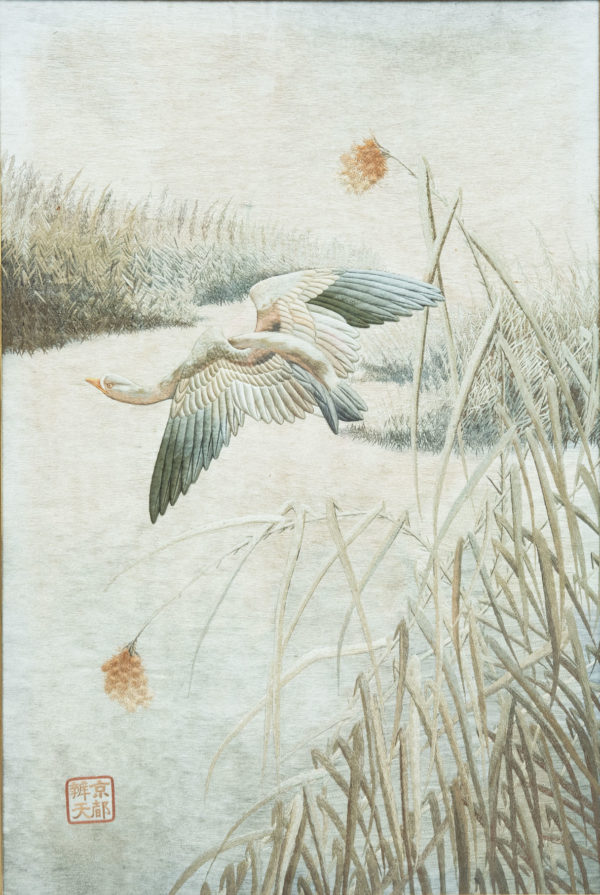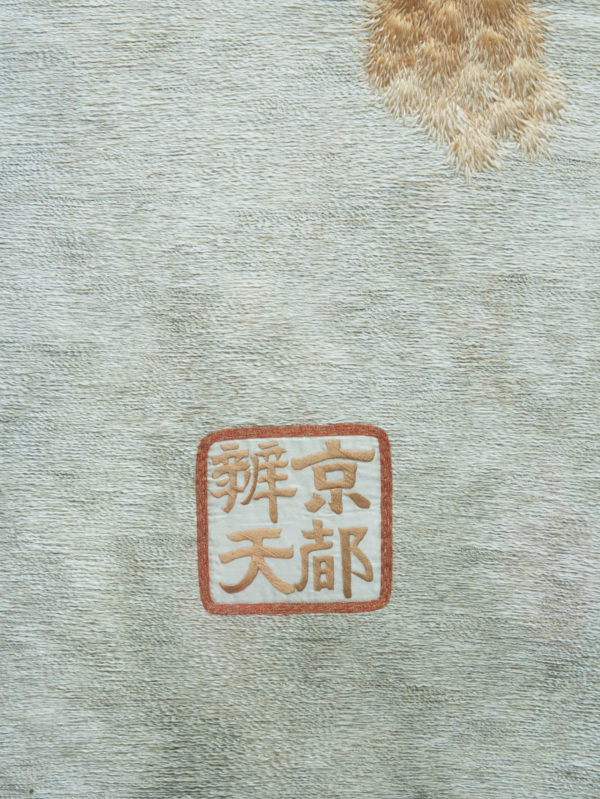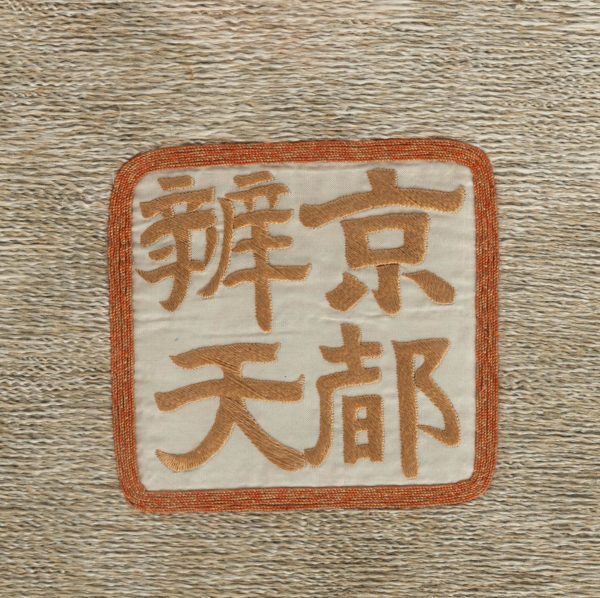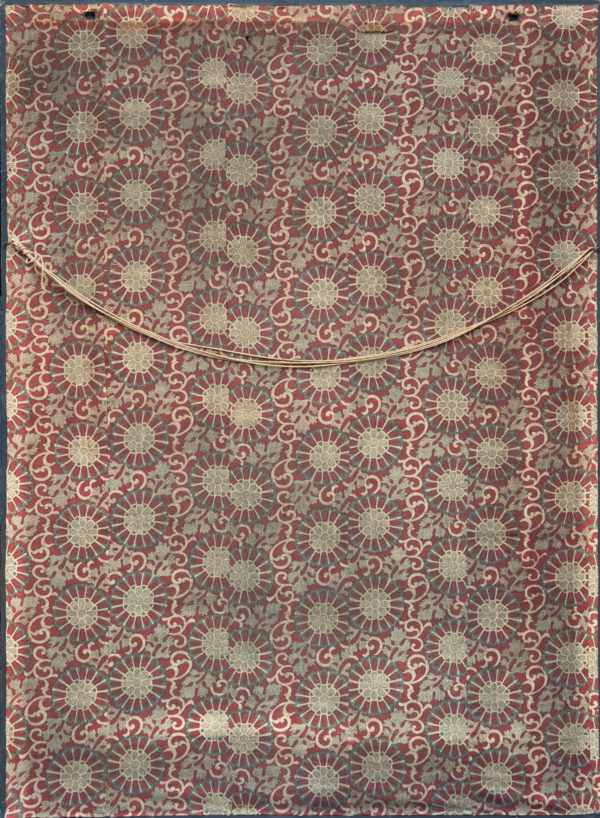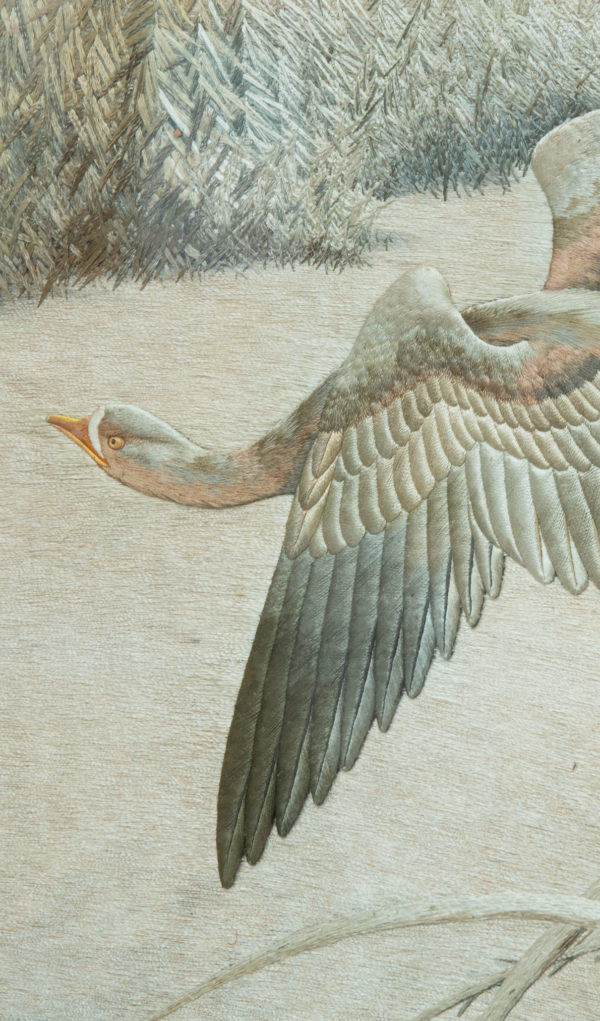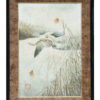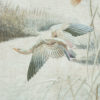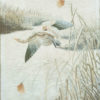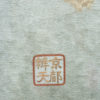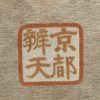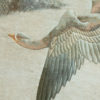As part of our Japanese works of art collection we are delighted to offer this large scale framed Meiji Period (1868-1912) signed silk textile, the Kyoto artist has rendered a very large scale textile of a goose in flight above a lakeside setting, the vibrantly coloured goose apparently coming in to land upon a lake surrounded by finely stitched rushes and ferns, the gooses neck stretching as its eyes look for the perfect landing spot, the birds feathers and facial features beautifully hand stitched to an exacting standard of workmanship. This charming textile is signed in a large stitched seal that simply reads as”Benten Kyoto” the textile is complete within its original silk backed black lacquer glazed frame , it was not unusual for such large textiles to be removed from the frames and rolled up for easy transportation for export.
Provenance :
This large and imposing textile has been hanging in an old baronial house in the south of Germany.
Literature :
The name on the seal Benten , does not lead us to the name of a particular embroiderer and is more widely recognised as the name of the Goddess of music and arts , one of the seven lucky Gods of Japan . However further extensive research on this textile leads us to a company formed in Kyoto in 1898 by the name of Benten Goshi Kaisha, a limited partnership formed between embroidery houses and other traders, apparently partly funded by the Kyoto Hotel Group and in particular the largest hotel in Kyoto at that time The Yaamirou Hotel, commonly referred to as the Yaami, the company was set up at an initial cost of 250,000 Jpy . It is evident that our seal Benten Kyoto is representing this company.
It makes total commercial sense that the finest artisans needed exclusive access to the wealthiest tourists, and in turn the hotels could harness these tourists for longer stays and certainly more profitable visits , especially if between them they had guides working on commission bringing the visitors to the hotel, where traders selling and generally promoting the wares of Kyoto from within their building presumably worked on a profit share basis , a kind of closed shop cartel that benefited the tour guides, the hotel group, the Benten company and the Kyoto economy as a whole.
One of the best known and most powerful Kyoto based embroidery companies was the Takashimaya company, then headed up by the third generation sons Shinshichi III & IV alongside Utako, the daughter of Shinshichi I .
It is recorded in : Threads of Silk and Gold, ornamental textiles from Meiji Japan, Hiroko T. McDermott and Dr Clare Pollard Ashmolean museum Oxford , that during this turbulant period of the Meiji restoration the Takashimaya shop had burnt down, thankfully the stock was in a fireproof store and was salvaged, this enabled Shinshichi II his wife Utako and the next generation of five sons to continue trading , perhaps this fire triggered their investment into the incorporation of the Benten Goshi Kaisha company, in conjunction with the Kyoto hotel group and other selected Kyoto traders. It would certainly make commercial sense, as this would have provided the Takashimaya company with immediate access to highly desirable premises as well as to wealthy tourists, however it is also recorded in the Kyoto hotel archives that the Yaamirou hotel sadly suffered from a devastating fire on the 25th of March 1899, when it burnt to the ground. We cannot be certain of the timings or the collaboration, if any, and it is possible that these unfortunate events were years apart, and under different generations of the Shinshichi dynasty.
What we can say with a degree of certainty following further research of the Kyoto hotel group archives records, is that following this devastating fire some of the most powerful Kyoto businesses and traders submitted a business plan to the mayor of Kyoto to rebuild the Yaamirou, among the most prominent names recorded in that application was Iida Shinshichi of the Takashimaya company. By 1900, the Takashimaya which was headed by Iida Shinshichi III and IV opened its Yokohama Office in Benten Street (Benten dori).
Given this documented evidence and the plotted history of the company it seems very possible that Shinshichi III (1859-1944) was trading at the hotel as part of the Benten Goshi Kaisha company prior to that devastating fire, and certainly was instrumental in the plans to rebuild the Yaami.
As such I feel confident that this huge scale textile of such superb artistry was in fact manufactured by the house of Takashimaya, under the supervision of Iida Shinshichi III or IV in around 1898-1900.
The design work of geese in landscape was possibly by Takeuchi Seiho (1864-1942). He was in time to become one of the most respected Nihonga genre painters based in Kyoto, like Watanabe Seitei (1851-1918), Mochizuki Gyokuzan (1834-1913) and others who often painted swimming ducks and flying geese. Takeuchi Seiho was appointed as a chief designer for the Takashimaya in 1889.
Condition report :
Very fine condition with minimal signs of staining or fading.
Approximate Sizes :
Overall Height : 82 1/2″ 210 cm
Overall Width : 61 1/2″ 156 cm
Textile Height : 66″ 168 cm
Textile Width : 43 3/4″ ” 111 cm
Free UK delivery and a certificate of authenticity are included in the price of this item.
* Overseas buyers please enquire for shipping *
